|
Happy 2023, y’all! With the start of a new year come all the resolutions—personal, professional, and, of course, literary.
Tons of readers all over the world set annual reading goals for themselves with each new year. This means that around New Years, they choose an ideal number of books they’d like to read in the following year. Some readers take their goals quite seriously, while others might forget their goals right away—and plenty of readers don’t track their reading goals at all. Why do people go different routes? What’s the big deal with reading goals? Where do I track my reading goal?
There are a couple different ways to track your reading goal, independently or through a program, in writing or digitally.
Lots of readers use apps to track their reading. Storygraph and Goodreads both ask readers at the beginning of each year if they’d like to set a reading goal, and then readers can keep track of their books read compared to how much they still need to read to stay on target. These apps also keep track of when you read a book and what you thought of it as well. Some readers may choose to keep track of their own reading goals. You could start a spreadsheet in Microsoft Excel or Google Sheets to keep count of the books you’ve read so far this year. Others might prefer to keep a handwritten account of their reading in a journal and tally their books on the inside cover. What are reading goals good for?
Setting a reading goal for yourself is a great way to make reading a priority. If you want to make sure you’re reading consistently throughout the year, having a goal you’re trying to hit can keep that momentum going. It’s harder to let yourself fall into a reading slump or drift your attention to Netflix or doomscrolling if you’re always keeping that reading goal in mind.
What are reading goals bad for?
You should not set a reading goal for yourself if you’re going to use that to guilt or shame yourself. Reading should be a fun, relaxing activity that makes your brain work juuuuust a little bit. It should not feel like a burden or a punishment! If you’re setting this goal to trap yourself rather than inspire yourself—don’t. Be gentle with yourself, and only read when and if you actually want to.
Set realistic goals.
A good compromise if you want to set a reading goal but be careful not to trap yourself is to set realistic, attainable goals. If you read 5 books last year and it felt hard, you’d be setting yourself up for failure if you vow to read 50 books next year. A realistic goal can feel like an attainable challenge, and you’ll be more inspired to dive in.
If you set a reading goal last year, use that as a guide for setting your reading goal for this year. If your goal last year was 30 books and it felt really easy and you still had time to read more at the end of the year, maybe try doubling your goal and go for 60 books this year. If your goal last year was 52 books and you only read 12, and you’d still like to try to read more books, go for a small increase and aim for 15 books next year. If your goal last year was 100 and you hit it with a week or two to spare and it felt challenging and great, set the same goal for next year, or stretch it slightly to 105. If you set your goal too small and you find yourself nearing that magic number in May, you can always update your goal later! It’s better to start with a small goal, blow it out of the water, and get to set a stretch goal than it is to set your goal too high and never really feel like you can get there. Should I set a reading goal for myself?
This is up to you. You don’t have to jump on the trendy bandwagon and set a reading goal just because the readers around you are. Ask yourself why you’re considering setting a reading goal for yourself and why you read, and be real with yourself about what you can do.
At the end of the day (often literally), reading shouldn’t be a chore. It should be a pleasure. written by Christina Kann
0 Comments
Hey there, booklover! We’re compiling a list of our absolute favorite bookish holidays, so mark your calendar and celebrate with us.
Library Lovers Day: February 14
Don’t have a valentine? Wrong! You absolutely do have a valentine, and it’s your local library! Head down there, check out a book, and get reading!
National Children’s Book Day: April 2
This list would not be complete without a holiday dedicated especially to children’s books. We absolutely love kids’ books here at Wildling, and we plan on reading our favorites on April 2—we hope you do too.
D.E.A.R.: Drop Everything and Read Day: April 12
We’re all about a holiday that gives us an excuse to ignore our responsibilities and read instead. We also love celebrating the birthday of the fabulous, wonderful, incredible Beverly Cleary!
National Get Caught Reading Month: May
Wow, have we gotten caught reading in some weird places? You bet we have! And it’s pretty comforting to know there’s a whole month dedicated to something we do on the regular.
Rainbow Book Month™: June
We love celebrating Pride Month in all the ways, and of course that includes the bookish variety! The month of June is dedicated to celebrating LGBTQ+ authors and the stories that reflect the lives and experiences our lesbian, gay, bisexual, transgender, pansexual, genderqueer, queer, intersex, agender, and asexual community.
Be Kind to Editors and Writers Month: September
Hi, uh, yes. This is a completely objective choice. Obviously.
National Read a Book Day: September 6
We were debating making this day an employee holiday—thing is, we’d probably be reading a book if we were working anyway! Occupational hazard, but at least we’re celebrating!
National Novel Writing Month: November
NaNoWriMo—you know the drill! The goal is to write 50,000 words of a novel over the course of November. Will you be participating?
National Authors Day: November 1
We’ll take any excuse to celebrate our favorite people: authors! Wow, y’all are awesome, and have we mentioned you’re looking great today?
Jólabókaflóðið: December 24
It’s the Icelandic Christmas Book Flood, and we absolutely love this tradition. It is customary for every person in Iceland to receive at least one book on Christmas Eve. Just settle in with a cup of hot cocoa and read till you fall asleep!
Whether you choose to observe these holidays by reading, writing, or both, we can’t wait to celebrate with you all year long! written by Grace Ball
Got a lot of book-loving friends? Of course you do--bookish friends are the best kind of friends. And those great friends deserve great gifts, whether it’s for a birthday, a holiday, or maybe just to thank them for introducing you to your new favorite author.
Here’s a wrap-up of our favorite bookish gift ideas of the season.
A book from Bookshop.org
It might seem too obvious to say, but get your book bestie . . . a book! There’s still nothing like the gift of a new book, fresh with that new-book smell. *Deep inhale* Yep, it’s a high like no other.
But this time, instead of ordering on Amazon because it’s easy, or maybe because your favorite bookstore’s online selection is more limited, you can now support your favorite indie bookstore by shopping the super-convenient, massive selection of books available on Bookshop.org. Bookshop works with local, independent bookstores to provide an immense selection of books that are as easy to find and order as they are on Amazon--but instead of your money supporting billionaires and completely bypassing authors, your money goes to your local bookstore! It’s a win-win! (Can’t figure out which book they’ll love? Get them a Bookshop.org gift card!) A set of dust jackets from Nerdy Ink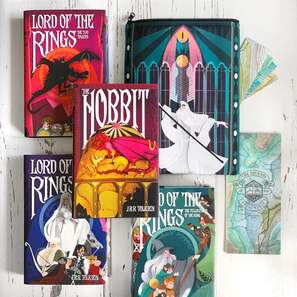 image credit: Nerdy Ink image credit: Nerdy Ink
The art of Nerdy Ink is otherworldly--and surprisingly affordable. It’s apparent that the artist behind the brand is a book lover themself, because so much passion is put into every piece. As of now, they’ve got dust jacket sets for collections like the Percy Jackson, Shadow and Bone, Red Rising, Throne of Glass, and Tolkein series of books, and at only $30-39 for an entire set, they often sell out. So hop to it! Your book bestie will cherish these (and you).
A cute tee from Inkwell Threads
You. Will. Love. These. Tees.
There are a lot of bookish T-shirts out there, and Inkwell Threads repeatedly comes out with the best designs. They are bright, colorful, modern, and clever as heck. Plus, there are so many options that you’re bound to find something for every kind of reader: your super-sarcastic friend who’s into horror, your daydreaming pal who wishes they lived at Pemberley with Mr. Darcy, your witchy sister who gives off all the fae energy, and even that one friend with kids who often struggles to find the time to read at all. They’re so well designed that your friend will want to wear these tees with every kind of outfit. There’s nothing like getting to wear your favorite bookish attire out and about and looking chic and stylish. Pair one with a blazer, a high-waisted pant, and voila! A protective book sleeve from Book Beau or DreamingofCelie
A true book-lover has at least one book with them at any given time. But taking your favorite book out into the world is a dangerous game: those book covers can be dented and torn and spilled on, the ends get all bent-up if you try to put them in your bag, and what if you’re reading in the park when it suddenly starts (*shudder*) raining?
Get your friend a gift that will protect their books in any situation: a pillowy book sleeve from Book Beau or the DreamingofCelie, two shops with lots of designs, cool options (some are waterproof and zip-up!), and even related accessories, like mugs, e-reader sleeves, tote bags, and reading pillows. Book Beau is a company that’s grown a lot in the past few years, so their quality and variety are great. The designs are gorgeous, and their thick sleeves comes in sizes “Mini” (for trade paperbacks) through “Jumbeau” (for your giant hardcovers). DreamingofCelie (an Etsy shop) also has high-quality products and a great variety, plus it’s full of designs purposefully made to bring more inclusivity to the bookish world, like the infectiously joyful "Latina Joys" sleeve, the unique "Black Woman Comic Panels" sleeve, or the freaking adorable “Women on the Go” sleeve. The shop is a Black-woman-owned business boasting almost two thousand sales and rave reviews for quality, design, originality, and customer service. You can’t go wrong here. A book holder
Your bookish friend may want to read everywhere and at any time, but the reality of reading is sometimes frustrating and messy. You want to read on your lunch break, but holding your book open with one hand and eating with the other can lead to hand cramps, your book flipping closed when you’re in the middle of a juicy scene, and mustard splattered across the pages of your favorite hardcover. Or maybe your kid fell asleep in your arms again, and while you’d rather die there than wake them from that peaceful sleep, you know if you had an extra set of arms you’d be a hundred pages into that novel you’ve been dying to start.
Well, the world of cheap and clever items has heard your cry! Honorable Mentions
Comfy socks
Book subscriptions Coffee/tea/wine that they can enjoy while reading written by Mary-Peyton Crook
These days, there are a lot of ways to publish a book. The hard work of indie publishers, combined with self-publishing sites, have cleared the road to publication for a lot of talented authors, including those in marginalized communities, who otherwise wouldn’t be able to get the attention of the elite traditional publishers. But for every talented author who puts out a great book, there are a hundred other people using this opportunity to publish anything they want, good or not. Even the best books and indie authors can be lost in the sea of noise, never finding their audience, never getting the attention they deserve.
If you’ve ever met an indie author in person, odds are they are exhausted. They’ve probably been working on a whole suite of marketing efforts for months, using all their mental energy, their time, their money, their social connections, and their best ideas to get even just one more share, one more review, one more book order. If you find a book or author you love, it’s important to do what you can to support them. In fact, if you want them to survive their marketing efforts long enough to publish more books, you have to support them. Can’t afford to buy copies of their book to hand out to everyone you know? No problem. No matter what resources are available to you, there are lots of ways you can support indie authors. Leave them a 5-star review (free)
This is one of the absolute best things you can do for an indie author, and it costs you zero dollars (and less than five minutes). Find their title on Amazon, Goodreads, Storygraph, etc., give them five stars, and leave a few words about why you like the book. Easy peasy.
Like/follow their social media accounts (free)
Every modern author should have a social media account, because it’s a stellar way to grow and communicate with their audience. Help them by liking, following, subscribing, and sharing that account they’ve worked so hard to create and maintain (even if it’s not a great account quite yet!).
Comment/share/save their social media posts (free)
Thanks to that little thing called the algorithm, the more interaction (likes and comments) a post gets on Instagram, Facebook, Twitter, etc., the more that post is shared to new audiences. Follow indie authors, but more than that, leave comments and likes on their posts! It makes a big difference.
Add their book to your TBR (free)
Pre- and post-publication book buzz from readers on the internet is one of the strongest forms of book marketing possible. Sites like Goodreads or—our favorite—Storygraph are specifically made for readers to track and share the books they’re most excited about. If you add a book to your “Want to Read” list or leave it a positive review, other readers will see and take note of that praise.
Post about their book on your own socials. (free)
You have friends on your social media accounts who don’t know the indie author you love so much. Posting about that author to your network is like free advertising to people they may have never been able to reach otherwise. The vast reading communities on Instagram and TikTok are proof that readers love to hear recommendations from other readers. Even if you have a small network, your post will reach at least one person, and that means everything to an indie author.
Lend their book to a friend. (free ish)
No matter how the times change, the strongest, most-trusted book recommendations is still a book loan from a friend. Share your copy of the book with other readers who will love it. And when they love it too, ask them to leave a 5-star review or do any of these other suggestions too! Again, if you want your favorite author to keep writing, you gotta help their audience grow!
Ask for their book for your birthday/holiday gift. (free to you)
If you can’t buy the book yourself, add it to your birthday or holiday wish list. That way you get a copy of the book you love, and the author gets another book sale. It’s a win-win!
Attend an author event (some are even virtual!). (often free)
When an indie author makes the effort to be a part of a book signing, talk, or reading, whether in person or virtually, it takes a lot of planning, investment, and nerves. Writers are often introverts who force themselves to be social for the sake of their book, so having a supportive fan like you in the audience means the world to them. Many events these days are virtual, and most are free, so the cost to you is minimal.
Recommend the book for your next book club read. (free ish)
Recommending a book to a friend is a great way to promote it, but recommending it to an entire group of friends who will literally purchase and read that book together? Now that’s supporting an indie author in a big way.
Write the author a nice message. (free)
Indie authors are tired and overwhelmed and constantly doubt their book’s worth. Send them a message of support and gratitude for making a piece of art that affected your life in some positive way. It will mean more to them than you can know.
Buy their books. (paid)
Authors often offer limited-time-only discounts on their book so more affordable people have the opportunity to purchase it. It can cost a lot of money to market their book, so of course they’d like to make that money back, but the most important thing is to get their book to those who will love and appreciate it.
If you can afford to buy their book, do it. Do it do it do it. Do it! And do your best to get it straight from them or their publisher, instead of through Amazon or other third-party sites. If you can afford to buy it from them at full price, girl, ya gotta. Whatever level of affordability makes sense to you, go for it. You can’t begin to imagine what a single book order means to an indie author (unless you’re an author yourself). The point is to do what you can in whatever way you can. It may be easier these days to publish a book, but it is not easy to be an author. If someone sacrifices their time and money to write a book that makes your life better, repay them by doing at least three things to support them. You won’t regret it! written by Mary-Peyton Crook
1.72 trillion. That’s how many photos are taken every year! That’s 4.7 billion a day! 95 million of those photos are posted to Instagram per day, and we share 1.3 billion photos daily on Instagram alone. Is your head spinning from these numbers? Because mine sure is! In this vast sea of imagery, how do we get the pictures you take noticed and shared? There is no golden answer for this, but with these tips I am about to share with you, you will be on the right path.
Tip 1: Wipe off your camera lens!
Chances are you are using a smartphone for your pictures and your phone has been handled quite a bit. It’s very easy to smudge your lens, and cleaning it before taking photos will guarantee that your photos will not appear foggy.
Tip 2: Remember the rule of thirds.
As Adobe puts it, “The rule of thirds is a composition guideline that places your subject in the left or right third of an image, leaving the other two thirds more open. While there are other forms of composition, the rule of thirds generally leads to compelling and well-composed shots.” Recognizing and utilizing this rule becomes easier the more photos you take, but until then, enable the "grid" on your smartphone camera to make this easier to follow.
Tip 3: Before you take your photos, tap on your subject.
This will let your camera know the focal point of your photo and ensure a sharper image.
Tip 4: Check your lighting.
If you are using natural lighting or a light ring, be sure to check where your shadows are being cast. If you are taking pictures outside, the “golden hour” is ideal. This is the hour before sunset, and you can get some pretty great pictures using this natural light source.
Tip 5: Take multiple photos from different angles.
By doing this you will give yourself different options when selecting your photo to post. Straight on images don’t always work and can lack character depending on the subject. Be adventurous with this, if it doesn’t work out, just delete it.
Tip 6: Negative space is a good thing.
According to Adobe, “Negative space photography is related to minimalist photography. It emphasizes not just the subject, but the empty space around the subject. The viewer's eyes may be drawn to a central figure, but they can't help noticing the large section of emptiness that surrounds and defines that figure.”
One mistake people commonly make is to zoom in on their subject so it takes up most of the space in the photo. But this can be jarring and unappealing to the viewer. By using negative space, you call more attention to the subject of your photo. With these tips you will be off to a great start. Now let your creativity free and have fun! Happy photo-shooting! written by Michael Hardison
There’s a 99.9% chance you’ve seen one while driving or walking around. A precious little house on a stick with a door you can open and BOOM—inside, it’s full of books. What a beautiful world we live in. But do you know what these tiny book havens are, or where they come from?
These boxes of bookish goodness are called Little Free Libraries. Most of them are registered with the Little Free Library 501(c)(3) nonprofit organization; you can tell which are registered by the plaques they bear featuring their ID number. But even those that aren’t registered are still lovingly referred to as Little Free Libraries, because we are not here to gatekeep book access.
How did Little Free Library start?
The very first official Little Free Library was created in Hudson, Wisconsin, in 2009. A very cool dude named Todd Bol built a miniature model of a one-room schoolhouse and then filled it with books to honor his mother, who was a teacher and a lifelong booklover, and mounted it on a post in his front yard. His friends and family loved it so much that he happily made more to share with them.
The next step for Little Free Library was Rick Brooks, who was an outreach program manager at the University of Wisconsin. Together, Bol and Brooks decided to make Little Free Libraries their next endeavor. Andrew Carnegie once committed to creating 2,508 libraries; to honor him, Bol and Brooks committed to creating 2,508 Little Free Libraries by the end of 2013, a deadline they beat by a year and a half in August 2012. In 2015, they were awarded the Library of Congress Literacy Award. In 2020, they were awarded the World Literacy Award from the World Literacy Foundation. Todd Bol tragically passed away in 2018 from pancreatic cancer. According to the organization’s site, “He remained dedicated to Little Free Library’s mission in his last days, saying, ‘I really believe in a Little Free Library on every block and a book in every hand. I believe people can fix their neighborhoods, fix their communities, develop systems of sharing, learn from each other, and see that they have a better place on this planet to live.’” This year, 2022, Little Free Library hit the 150,000 library mark, which is truly incredible. And this number doesn’t even include the unregistered libraries! What’s the point of Little Free Libraries?
Today, Little Free Libraries are about two things: community and book access. The main point of Little Free Libraries is to provide books freely to communities, especially those communities where getting books can be a challenge, particularly for children. According to the LFL website, 2 out of 3 children living in low-income communities own zero books. Little Free Libraries are a great way to change that. Anyone can start a Little Free Library anywhere (on their own property, anyway). But on top of that, LFL has their Impact Library Program, an initiative that strives to install and maintain Little Free Libraries in book deserts in the US and Canada.
Who can start a Little Free Library?
Anyone who owns land that the public might walk past can start a Little Free Library! A LFL does have to be on your personal property, and it has to be somewhere people can easily access it from public property. This is why most of the LFLs you see will be in someone’s front yard or by a business’s front door, right up against the sidewalk.
Little Free Library owners are called “stewards.” This language, rather than calling them “owners,” is meant to indicate the long-term commitment of opening a LFL. You can’t just install one and then never think of it again. LFL stewards are librarians, caretakers. It’s their job to make sure the LFL stays safe and clean and full of books! How can I find a Little Free Library?
The funnest way (in some people’s opinion) to find a LFL is to drive or walk around and happen upon one. This is part of the charm of the LFLs—they pop up when you’re not expecting them.
But if you’re a planner, there is a way to seek out LFLs near you. Little Free Library has an amazing app that features a map where you can find all the registered LFLs near you! As a reminder, there are plenty of unregistered LFLs as well, so this map is not comprehensive, but it’s a great place to start if you’re unsure where your local LFLs are, or if you’re traveling and seeking out new LFLs as you’re sightseeing. This LFL isn’t full of books. What’s up with that?
There are some small house-looking constructions, especially in cities and low-income areas, that don’t have books inside, but instead have food and other necessities. These are community food pantries run by amazing people to support their local communities. If you open up a LFL and find canned goods and other food items inside, be glad you’re in such an amazing community, and move on in your search.
Sometimes, you might open up a LFL to find that it’s totally empty. No books, no nothing. This usually happens when a LFL steward has moved away from their home that had the LFL, moved from the business where they built the LFL, or for some other reason isn’t able to care for the library. The best thing you can do if you find an empty LFL is to fill it! Go home, grab some books you no longer need, hop in your car, and go fill that bad boy up. You might even consider bringing wipes or other materials to clean the library up a bit and make it appealing to the community!
How can I engage?
The best way to support your local Little Free Library is to take a book, leave a book. When you have a book you don’t need or want anymore, take it to your local LFL, and perhaps peek inside to see if there’s anything of interest to you in there. The more that books are coming and going from these LFLs, the more people will want to visit again and again to see what’s new. Some LFLs even have social media accounts where you can follow to support them. You can make a post when you visit to share that LFL with your networks.
Little Free Libraries are amazing little oases of books that came from a wonderful initiative to make books more accessible to children who need them. We’re lucky that we all get to participate in taking a book, leaving a book, reading a book, and sharing a book. So if you’re wondering how to spend your afternoon, download the LFL app, see where the libraries are near you, and set out on a bookish adventure! written by Christina Kann
Sci-fi / Fantasy—they’re grouped together all the time, and for good reason. The genres overlap in many aspects and are both categorized as speculative fiction. So, what exactly makes them similar, and what distinguishes one from the other? And why should you even care?
Science fiction explores how science might impact a society or individuals, oftentimes in the future. Sci-fi presents a world that doesn’t exist but could exist with technological advancement—classic examples are Fahrenheit 451 by Ray Bradbury and Frankenstein by Mary Shelley.
Fantasy, on the other hand, contends with the supernatural, the magical, with settings in different worlds that could not exist—see The Lord of the Rings by J.R.R. Tolkien and A Game of Thrones by George R.R. Martin. Both include super fun sub-genres. Here are some examples in a very non-comprehensive list: Sci-fi subgenres
Fantasy subgenres
Writing a science fiction or a fantasy novel will require creativity and imagination to be sure, but you’ll also need to follow some rules. Oftentimes people think of science fiction as logic based and differentiate fantasy by chalking the genre up to a magical nonsense land where the rules don’t apply because . . . well, magic! We don’t recommend taking this approach.
Like science fiction, fantasy also requires a set of rules that the reader can follow so that the story remains satisfying and impactful. Science fiction and fantasy both deal with worlds that are unlike our own. The differences come into play when building those worlds. Common (not required) characteristics of science fiction:
Common (not required) characteristics of fantasy:
Why does any of this matter? Well, if you’re writing a sci-fi or a fantasy novel, it’s important to know the elements characteristic of each genre. You wouldn’t want to leave readers scratching their heads by including a wizard, a selkie, and a hobbit in your sci-fi novel, right? It’s important to be familiar with the genre you’re writing in so that you can be aware of the conventions of that genre. There are certain elements of each genre that readers come to expect, and we wouldn’t want to disappoint!
So, when does defining your genre become important? When querying your book, publishers will want you to be able to be able to sum up your book succinctly and clearly, and oftentimes genre can be a great first step in doing this. The reason publishers tend to care about this categorization is, ultimately, the genre will determine certain elements of marketing and how your book gets into the hands of readers. If you’re unable to clearly define your genre, categorizing your book in industry databases becomes more difficult, which could inhibit readers from finding it. Whether you’re writing the next great sci-fi or fantasy novel, keep your reader in mind, and do whatever you can to make your book as accessible to them as possible. Resources:
written by Grace Ball
The definition of metadata is quite simple: it’s any data that describes your book—including title, subtitle, price, publication date, ISBN, and any other relevant information that readers use to find your book when searching online or in a database. Metadata is critical to the success of the marketing and distributing your book, and it should not be glossed over or ignored.
Let’s go down the list of metadata and briefly explore each of them.
Title
This is the title of your book, including subtitle. Keep it fewer than 80 characters long so that it is mobile friendly.
Contributor(s)
This includes all names of those involved in the project that are on the cover or title page. Be consistent with spelling, middle initials, etc.
Contributor(s) bio
Keep this under 250 words for each contributor. Avoid adding external links that could drive customers away from purchasing your book.
Series
If applicable, include the series name and number so that your readers are aware of titles in the series
Description
In 200 to 600 words, describe your book in a conversational tone. This is probably the same as the synopsis you have on your back cover.
Genre
Choose 2 to 3 BISAC subject codes that are specific to your book’s genre. Be careful when choosing general genres like “drama” because many bookstores categorize plays as dramas. Choosing the wrong BISAC codes can make your book harder for your intended audience to find.
Keywords
Choose 7 or more keywords and phrases that will draw the consumer and describe your book. These are hidden online search items that will help your book be found, so be specific when choosing your keywords.
Format
This is the description of the book binding, is it a paperback, hardcover, e-book? A combination of these? Include all formats and be sure to use one ISBN per format to keep them distinct from one another.
Review quotes
If applicable, include 2 to 8 positive reviews of your work. These reviews can come from industry sources, publications, and relevant people such as other authors and reputable bloggers.
Audience
Is your book for the general adult market, juvenile (age 0 – 12), or young adult (Age 12-17)? Make sure you choose your correct audience and that your BISAC codes are chosen from the audience selected.
Age and grade
If your book has a juvenile or young adult audience, pick an age and grade range to target the appropriate audience for your book. If you do not know your target age and grade range, a simple search will direct you to readability meters where you can cut and paste a portion of your text to see what grade and age range your book falls under.
Publishers take metadata very seriously, and so should you. If you are self-publishing, I leave you with one very important tip: don’t rush compiling your metadata! I know you are excited to get your book out into the world but take your time choosing the proper keywords and subject codes. Metadata is a most often times forgotten key to a book’s success!
We all grew up hearing the old adage, “Don’t judge a book by its cover.” That makes perfect sense when that “cover” is a person you know nothing about. But in the book publishing world, this piece of advice couldn’t be farther from reality.
When you’re in the bookstore, real or virtual, what initially draws you to learn more about a book? The cover, of course. But to create a compelling cover, you must first know what pieces make up the cover's anatomy. Don’t worry, this is a lot less bloody than health class . . . well, unless you're designing covers for Stephen King.
Front cover
The front cover is where you want to capture your reader. This can be done by choosing fonts and imagery that best represents your book. Your book cover will need to include the title, subtitle (if there is one), and bylines. You can also add an endorsement blurb if you have space.
I can’t express enough how important typography is in cover design! When choosing a font, take into consideration what genre your book is categorized under. For instance, you don’t want to design a children’s book using fonts that would be found on the cover of a legal drama. And you want a font that is legible at a glance. Just as importantly as font choice, you want to pick imagery that will attract your reader while conveying what your book is about. You’ll want to choose imagery that leaves space for your title to be seen clearly. Especially since your cover will be seen in all sizes from a thumbnail on a website to poster size at your meet and greets. Back cover
Your book has attracted a reader and they have picked it up and flipped it over. Great! On the back cover, you want to have a book description that doesn’t give away the entire story but draws the potential reader to want to purchase it and begin reading.
You have options on what else you would like to include, depending on space remaining. For instance, you can include a short author bio and author photo OR you can add an endorsement. You will also find the barcode and publisher imprint (if applicable), usually in the bottom quarter of the cover. Spine
The spine should never be considered an afterthought. I have been told in the past that some bookstores pick books based on how compelling the spine looks, because they shelf their books spine out. Here you want to have the author’s name and the title of the book. If there is a publisher, you will also want the publisher’s imprint (logo) in this space. Traditionally, spines are designed with the author’s name at the top, title in the center, and imprint at the bottom.
These three elements will be found on paperbacks and casebound hardcovers. Books with dust jackets will have a similar anatomy, but they will also have jacket flaps (the folded part of the dust jacket that wraps around the hardcover). With dust jackets, you have more space to spread out the descriptive text of your book. You can move your endorsements to the back cover and reserve the jacket flaps for the book description and/or a lengthier author bio.
So there you have it! The basic anatomy of a book cover. When designed correctly, the cover becomes an invaluable tool for promoting and selling your book! It is the branding of you and your story. The more professional your book cover is, the more seriously you are taken by readers. Just remember, in this case, the reader does judge a book by its cover! written by Michael Hardison
Join Christina in conversation with Becky Robinson, founder of Weaving Influence, host of the Book Marketing Action Podcast, and author of Reach: Creating the Biggest Possible Audience for Your Message, Book, or Cause.
Christina Kann 00:06
Welcome to How Do I Book? by Wildling Press. We like to chat about book writing, book publishing, book marketing, and, of course, book reading. We're trying to help new and experienced authors develop their craft, widen their perspectives, and learn to get a little wild every once in a while. I'm Christina Kann, and I'm extremely excited to be joined today by Becky Robinson from over at Weaving Influence! Becky, say hello to the listeners. Becky Robinson 00:33 Hi, everybody, I'm so happy to be here with you. Christina Kann 00:36 I'm really happy to have you here. Tell everyone a little bit about what you do over at Weaving Influence and your podcast. Becky Robinson 00:45 I would love to. Weaving Influence is a full-service comprehensive digital marketing agency, and we specialize in serving authors and thought leaders. I founded Weaving Influence in 2012, and we have primarily served nonfiction business book authors. However, in recent years, we've had the opportunity to support some fiction authors. What we've found is that many of the approaches we use in nonfiction translate well to fiction. In the meantime, we've been learning about the differences in how to market fiction as well. My podcast is the Book Marketing Action Podcast. We are just wrapping up our third season, and we primarily focus on actions authors can take immediately to expand the reach of their books in the world. I'm also an author myself. My first book, Reach: Create the Biggest Possible Audience for Your Message, Book, or Cause launched in April of 2022. I was so glad to be able to bring together the thinking and framework I use in helping authors figure out how to reach more readers with their books. I was really happy to be able to put that all into writing, into something people could access easily. Christina Kann 01:55 I'm also incredibly happy you were able to put that into writing, because it's such a valuable resource. You were kind enough to send me a copy of your book, Reach. It really has so much excellent information for people who are engaging in the digital marketing arena, so definitely check it out. I'll put a link in our episode notes. If you are trying to build an online audience and engage in an authentic way, this is a great, great, great place to start getting in the right mindset. Becky Robinson 02:27 And if you don't mind me mentioning, Christina, we also have started the Reach More Readers Workshop, which is a live and interactive workshop that authors can join. It's 10 hours of training across two days. While the content is similar to what's in the book, there's the chance to interact with other authors. One of the things I'm most proud of is the way the groups who participate in our workshop are really an inclusive community where anyone is welcome. People can really meet and connect with others who might want to support their work. In those workshops, we have had fiction, nonfiction, memoir, self-help, business -- all different genres of people, but they all share this common goal of making a difference in the world. When we get together for the workshops virtually, it's the most beautiful chance to connect. And I love doing it. Christina Kann 03:18 That is so amazing. We're here to talk today about one really specific facet of your book. Your book addresses your four commitments, the four components you break digital marketing into. I love that. Do you mind telling the listeners briefly -- because, obviously, they need to buy your book -- what those components are? Becky Robinson 03:42 As I was crafting the book, what I started to notice as I interviewed different authors and thought leaders about what reach meant to them or how they achieved reach for their work, hat kind of surfaced were these. At first, I called them "four factors." They were things that every author or thought leader I talked to seem to have in common. The amazing thing is, when we got to the point of editing the book, my editor said, "Well, 'factors' is super boring." So he threw out a whole bunch of different words that I could use instead. "Commitments" is really special and powerful to me, because if you want to do something big in the world, it's not something you can take lightly. It does require a commitment; it requires focus. I love that we ended up calling them the four commitments in the book, and I'm happy to share them briefly. The first commitment is value. If you want to build an online presence, the only way you can attract an audience is if you have something they perceive to be a value. If you're a fiction author, maybe you're telling a particular kind of story; the value you're providing is entertainment, art, craft. If you're nonfiction, you're providing value around a topic, and your audience has a felt need in that area. Every author who wants to build reach really has to start with getting clear about the value they have to offer and who the audience is who's going to find that valuable. Value is determined by the person receiving the value. So that's the first commitment:" value. The second commitment is consistency. It's not enough to just create a thing of value. What you want to do is consistently show up with value. In the book I talk about how this doesn't mean you have to blog daily; it doesn't mean you have to release a podcast weekly; it doesn't even mean you need to tweet X times per day. The idea is that you need to consistently show up with value. I always coach authors to figure out what sustainable. Some of us can really turn out content every day. Others have a busy day job, and that might not be possible. But what you want is to be able to create an expectation that you will keep showing up so your audience knows they can count on you and trust you. So consistency is the second one. The third commitment is generosity. This one is sometimes unexpected. When I talk about generosity with your online presence, it really has to do with being willing to share value freely with others. Sometimes that value is just your authentic self. You can be generous by showing up as your authentic self, sharing vulnerably about your experiences or perceptions, sharing what you know about the craft of writing. Fiction authors especially seem to be able to gather an online community by talking about how they do what they do as a fiction writer. Readers are interested in that. They want to hear how you do what you do. They want the behind the scenes; they want to know what's in the head of that fiction author as they're crafting their characters are telling their story. So whatever that value is that you have to offer, having kind of open hands, if you want to think about generosity that way. It doesn't necessarily mean you're giving away products and services for free. But it does mean you're giving energy, encouragement, and inspiration, as you show up consistently in online spaces. The final one is longevity. Honestly, I think this is the one that has the biggest potential upside, because people get excited to start things. People are not necessarily always as excited to finish things. Christina Kann 07:47 So true. My husband loves to start a video game and never ever, ever finish it. Becky Robinson 07:53 That' s funny. I want to reference Dorie Clark, who's a thought leader in this space. She wrote a book called The Long Game, and in it, she talks about the fact that growing an online presence that's worthwhile does take an extreme amount of time. She notes that you have to consistently show up with value in online spaces sometimes for an entire year before you see any results. If you think about that, from the perspective of someone who writes a book, and then just gets online for the first time, a lot of times, if it's going to take a whole year to get results, you're gonna give up before you even see the results. Dorie Clark also says that to be recognized as an expert online, you have to consistently share value online for five years. So that long-term view, that long-game view, is critically important. Just to quote Dory one more time -- I'm a super fan, obviously -- the reason why some people become successful and others do not is because some people keep going and other people just give up. If you think about Wildling Press -- you're new on the scene -- when you're still here, Christina, in 10 years, you're likely to be successful, because other people who started publishing companies when you did will have quit by then. Christina Kann 09:11 I love all of that. Thank you so much for sharing. For more detailed explanations and investigations into these four commitments, definitely check out Reach. I'm not gonna stop plugging it because it's an awesome book. Today we're here to talk about one specific commitment that really struck me, and I guess it struck you as well, because you said it was the most unexpected commitment: generosity. I think this is one that authors and other people who are marketing themselves online tend to skip over because it's not exactly intuitive. If you're trying to earn money writing, it's not exactly intuitive to give out a lot of stuff for free. Can you expand a little bit about the role of generosity in digital marketing? Becky Robinson 09:55 Well, it's a great way to say it. I love that. So before getting ready to get generous, before creating their generosity plan for how to freely give value online, does an author need to shift their mentality at all? Is there anything that an author can do to get ready for that? If they have gotten online being like, "I'm here to sell," but now they're realizing they need to make a little bit of a change, how can they prepare for that? Becky Robinson 09:55 I think that one of the reasons why generosity is so important is because it really helps us rise above the noise. There is so much noise. Especially if you show up and you have something to sell... We get sold to constantly. I get pitches in my email multiple times per day by people who want to sell me something. But I think it's so much more rare to have someone show up with an offer of something for free. So whether it's a free event where you're sharing something that you know, or a free resource that you're making available, by offering something of value to someone who needs it, you can make that more immediate relational connection. And that relational connection over time is what sets up the possibility of that person becoming someone who might share your work with others, of that person becoming someone who might continue to be in relationship with you. Generosity is the key that unlocks that relational connection door. And I've never said it this way before! Becky Robinson 11:24 That's a good question, and it can be challenging. I'm going to roll back way too many years, more than a decade, to when I first began this journey. One of the first things I did is I wrote these ebooks. They were on different topics related to digital marketing. I'll admit, Christina, when I created them, I thought it was going to sell them. I thought I was going to actually sell them for hundreds of dollars, because they were so valuable. We set up a landing page to sell these playbooks, and very quickly, what I realized is I didn't have anyone to sell them to. One of the phrases I like to repeat to myself is before you want to extract value, you have to add value. And so the shift that that required for me is this mindset shift of "I'm gonna focus on serving instead of selling." When you focus on serving, which is an act of generosity, again, it's the key that unlocks that relational door. It also helps to cement who you are as a brand, so people can begin to know you for the value you want to bring. Becky Robinson 12:32 I want to pause for just a minute though, Christina, because I know there might be some people listening for whom selling is not optional. If you are in a situation in which to survive, you need to sell, this advice might seem like I'm tone deaf. I want to just recognize that the ability to be generous, or the ability to serve before you sell, does in some ways require that you have a certain level of financial freedom, or that you have some other means of making money that isn't through your online presence. I'm definitely speaking from a place of privilege. I do have a business that's financially viable that frees me up to be generous. For those of you out there who may be just getting started as an author or really trying to navigate how you're going to make a living from this, it's hard to make a living from writing. I've heard people from marginalized identities talking about, "Well, it's all well and good to talk about giving things away, but I just don't have that margin." I just didn't want to go too far before I acknowledged that this content could be received in a lot of different ways. Christina Kann 13:46 Of course. I think it's important what you said. You can give generously without that being your main thing. You and I both run businesses, but we also host podcasts that are free information for whoever needs that information. It's about balancing the things you need to do to make money to survive with the ways you can engage with your audience. It's okay if sometimes you have more spoons to give that generosity than other times. Becky Robinson 14:15 Certainly so. It's generosity of spirit as well. Now, again, that takes time. It takes time to pause to encourage someone else or amplify someone else. But we all have something we can give. Christina Kann 14:30 Absolutely. What kind of spaces online are good for being generous and sharing value? How are the different online spaces good to share different kinds of value? Becky Robinson 14:44 You need to know your audience and where they're showing up to figure out what type of content would be most valuable to generously share with them. I think any online space is a place where you can be generous. I don't know necessarily that there's one particular channel that's easier than another. But because your audience is primarily people who are authors, one of the things I want to highlight is that a way to grow your network through generosity before you have a book come out is to find ways to be helpful to other authors. For example, if you're writing fiction in a particular genre, you could choose to participate in a book launch, or to help an author with their release, who's in a similar genre. That helps to build a relational connection. Not only that, but it also opens up an opportunity for you to learn from someone who's ahead of you on the journey. Becky Robinson 15:37 I have an author who launched a book earlier this week, and I was digging into some of our older correspondence. And what I discovered is that before he was my client, he was promoting other authors by being on the launch team. For those of you who might not know, a launch team is also sometimes called the street team, and a lot of authors will gather a group of people who will read a book in advance of their publication date so they can share Amazon reviews and do social sharing. What I'm recommending is if you're an author who's listening, or an aspiring author who's listening, one of the ways you could practice generosity is through other authors who are in your same genre or niche so you can build those relationships -- not only because you want something in return when your book comes out, but also for just the joy of supporting someone else and to learn from what they're doing. Christina Kann 16:28 I think this next question ties back a little bit into what you were saying earlier about knowing your audience. What kind of materials are good for sharing generously? We mentioned that time and energy are also things you can share generously. But if someone is interested in getting a little bit more concrete, what kinds of things are good for sharing? Becky Robinson 16:51 I'm happy to give a few ideas here. You mentioned the whole idea of a podcast. Podcasts are typically free. Obviously, there are models like Patreon, where creators will create content beyond the free content. That's a subscription model. That is that is an approach that works for some people. Becky Robinson 17:10 I referenced that playbooks that I wrote that I thought it was going to sell for hundreds of dollars. The shift that I had to make was, "Instead of making those playbooks for money, what if I gave them away for free?" which I actually ended up doing. The value of that was it drew an audience. Anyone who downloaded those playbooks for free could see my areas of expertise, etc. Any kind of content that you might create, you have that choice between, am I going to make this free, or will there be a cost associated with it? Becky Robinson 17:44 If you think about all the possibilities with content... You could do free videos. You could do free audio. You could do free written articles and ebooks. You could do free assessments. You could do free interactive events, if you wanted to. I have an author I'm working with right now who created this series called "Where Fact Meets Fiction." She is interviewing other historical fiction authors about their craft and about how they researched to write their fiction. It's very cool. It's free conversations; people can join them live. There are two benefits to that, and I'll tell you what they are. One of the benefits is all the readers who get that kind of inside view of how the authors are thinking about their writing are also getting kind of that chance to get to meet their favorite authors. So that's one value to the readers. There's also the value of the relational network that my client who's an author is forming with each of those authors. So if you're an author who's really been solo in your craft, and you decide you're going to do a series of interactive webinars, every single guest you have is another person that you're building that connection with. Not only will you have the opportunity to support their journey as an author, but they also may pour into yours. Christina Kann 19:00 Mutual support is such an important tenant of this like generosity mindset. In that same vein, how can authors engage with others and support others who are trying to share their value? Becky Robinson 19:17 There's always the idea of amplifying other people's work. I'll give you an example. I have a friend who's also in the digital marketing space; she runs a company that produces audiobooks, and I consistently refer business to her. In fact, her company helped me with the production of my audiobook. Well, she was out there generously today sharing a little audio clip from my book and talking about me and the idea of generosity, which was beautiful to see. Anytime you can take someone else's content and amplify it, that fuels that mutual supportiveness. That's probably one of the best ways to be generous, especially when a fellow author is publishing their book on their launch day, in their launch week. That's the very perfect time to be able to amplify someone else. The other thing is buying the books of those people you admire. As often as I can, when I have a client who has a book launching or another author friend who's having a book launch -- even if I don't even expect to read it, I'm gonna buy it. If they were in my hometown and I had the chance to take them out for lunch, you better believe I'm gonna try to fight them for the check and treat them to lunch. If I would fight them for the check and treat them for lunch, I'm gonna go buy their book. Christina Kann 20:37 Absolutely. Last question for you, Becky. What's one thing authors can do today to start being more generous in online spaces? Becky Robinson 20:47 I love that question. I'm going to go back to some of the tips I had before. One thing I'd like to encourage everyone who's listening today is just think for a minute about the authors you admire, and whoever the first one is who pops into your head, if you've read their book, go leave them an Amazon review. If you haven't read their book, find some other way to reach out and amplify something they're doing: share a post of theirs on Instagram to your own story and shout them out. If you're a more of a LinkedIn person, find a post they've made on LinkedIn and share it to your audience. Be generous with your praise by giving a very specific reason why you admire what they're doing in the world. Christina Kann 21:28 If you're already on Instagram, Twitter, LinkedIn, doing your authorly social media upkeep, it is really so easy to share something to your Instagram story or to retweet something. It's small for you, but for the person you're doing it to uplift, it can feel so big. Becky Robinson 21:50 Certainly. We all want to be seen and valued for the contribution we're making. Christina Kann 21:55 Yeah. Well, Becky, thank you so much for joining us. Thank you for being generous with your time and energy to come on How Do I Book? Becky Robinson 22:03 Thank you for having me. For those who are listening today, be sure to come over to the Book Marketing Action Podcast, because I will be interviewing Christina very soon. I'm not sure how these episodes will be launched, but if you're listening to this episode, definitely go look for Christina's interview on the Book Marketing Action Podcast. Christina Kann 22:22 I recommend listening to the whole backlog of episodes because y'all's podcast was actually the podcast that got me into marketing podcasts. When I first started listening to podcasts, I did a lot of comedy and fiction, because that's just more my vibe. But once I started listening to your podcast, I was like, "Oh, there's a lot of value out here in podcast land." That's another part of it: all of us producers and marketers are sharing information with each other in these ways as well. I just think that's so awesome and special. Becky Robinson 22:57 Very cool. I'm so glad. Hopefully people will listen to episode 100, where I share my top 10 lessons of 10 years of marketing books and 100 podcast episodes. Christina Kann 23:06 Oh my god, I'm so excited for that. Becky Robinson 23:08 I had fun recording it. It was really a lot of fun. It was just me in a room recording, but one of the things it cemented for me is how far I've come. If I'm honest, when I started the podcast, the early episodes I was recording solo -- we didn't have any guests at the beginning, Christina -- and I hated it. I thought I would want to quit. And now, 100 episodes in, it's so much fun. I can start recording and I don't blink. Christina Kann 23:37 Yes, I love that for you. I love that so much. Besides your podcast, where can people find you on the internet? Becky Robinson 23:44 There are two main places to find me. If you're interested in finding out about my company, Weaving Influence, you can go to weavinginfluence.com. If you're interested in me personally and my book and my journey as an entrepreneur, you can go to beckyrobinson.com. And then on all the social media platforms except Tik Tok, @beckyrbnsn. Christina Kann 24:13 That's linked below, as well as a link to purchase Reach, which I do recommend for everyone who's getting started on their book marketing plan. This is a great place to start sourcing ideas. Becky Robinson 24:27 One generous offer for your listeners, Christina. If there's anyone listening and you'd like to read my book, and you can't afford to buy it for some reason, maybe you're facing some hard times -- go ahead and email me. I'm becky@weavinginfluence.com. I'd love to get a copy of my book in the mail to you. Christina Kann 24:43 Wow, that's so generous! That's so on-theme of you. Love that so much. I so appreciate all that you do in the community. You really are an example of generosity. I really appreciate you coming on and sharing your expertise about generosity and digital marketing. Becky Robinson 25:01 Thanks, Christina can't wait to talk again. Christina Kann 25:05 And that's how you book.
Follow Becky Robinson on socials:
|
How Do I Book?We'll try to find the answer to that question in our blog. Archives
August 2023
Categories
All
|
||||||

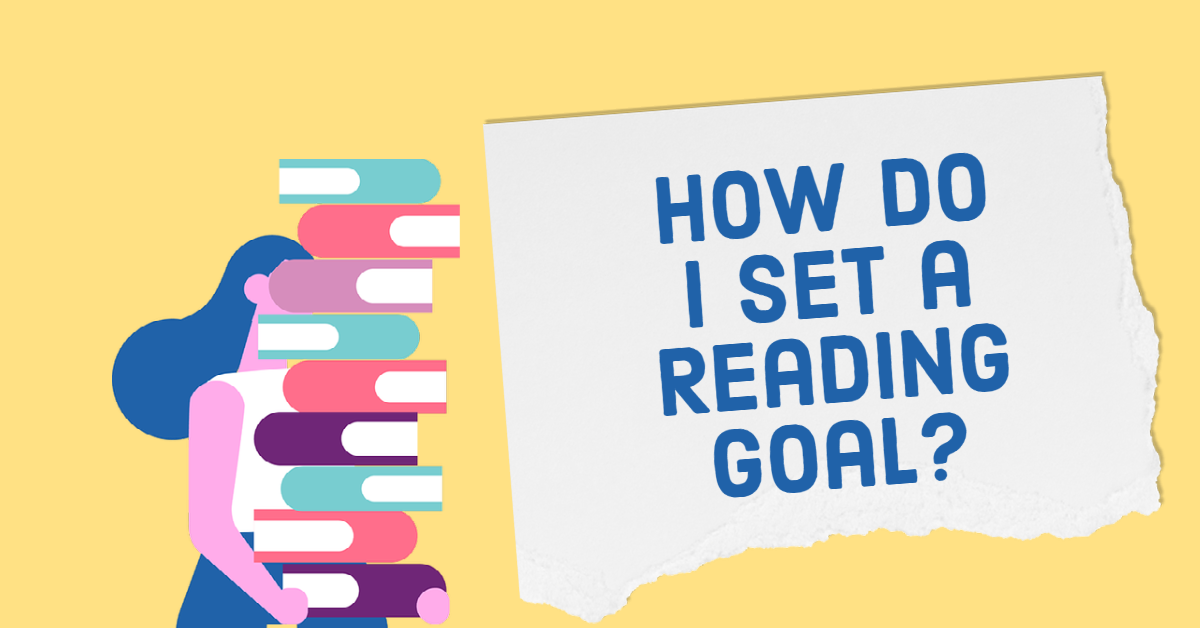
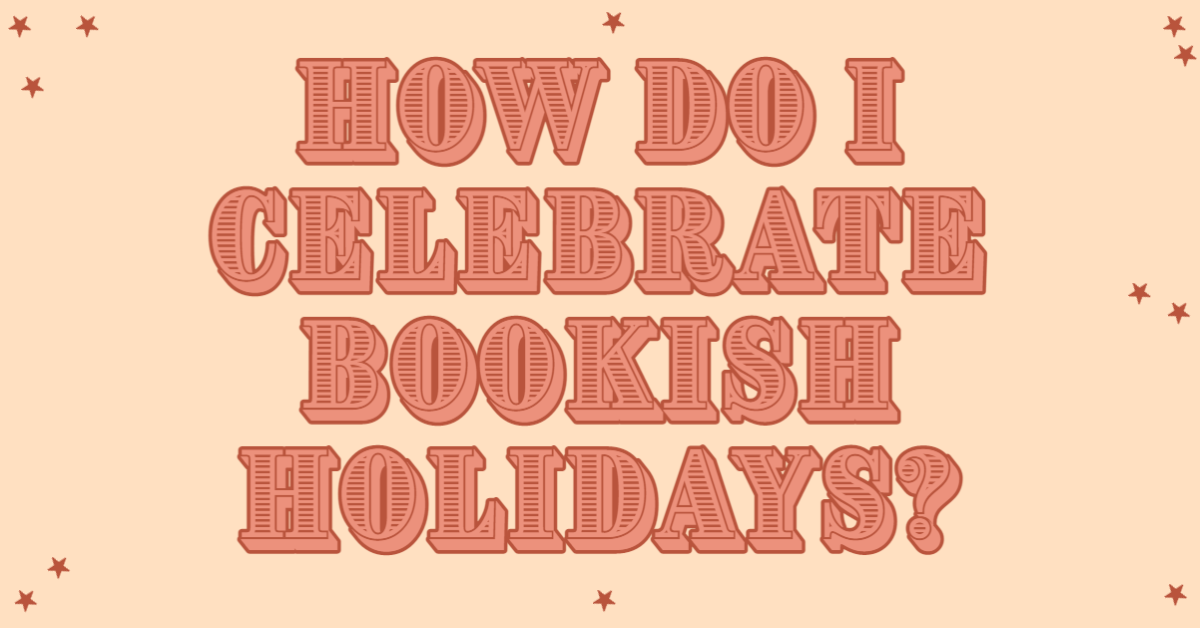
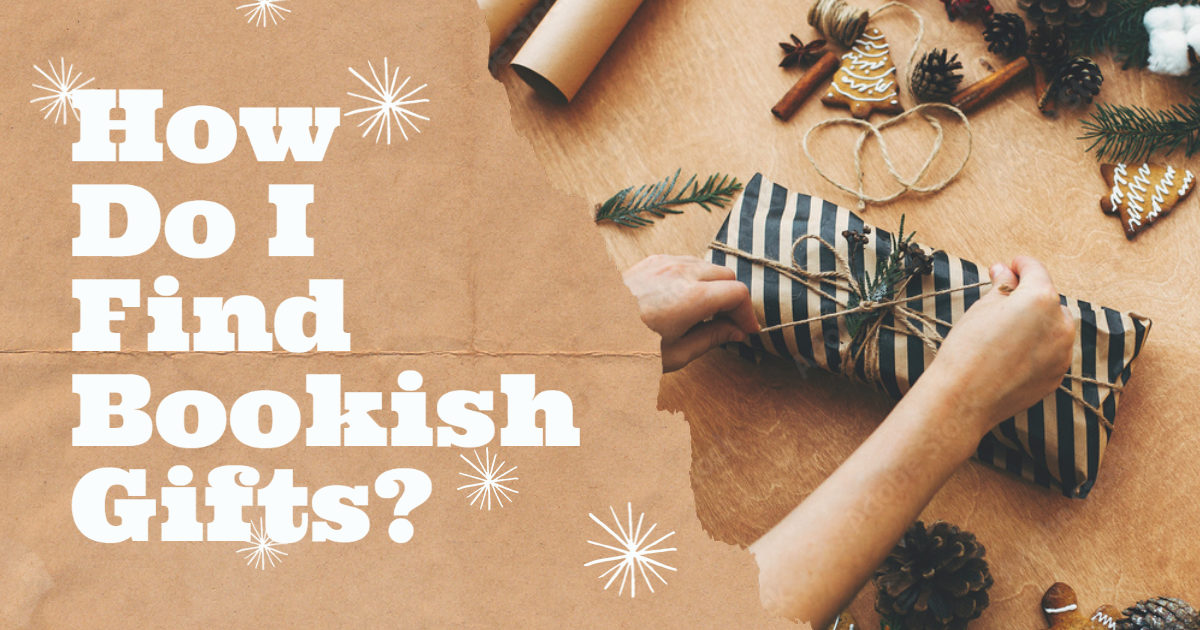
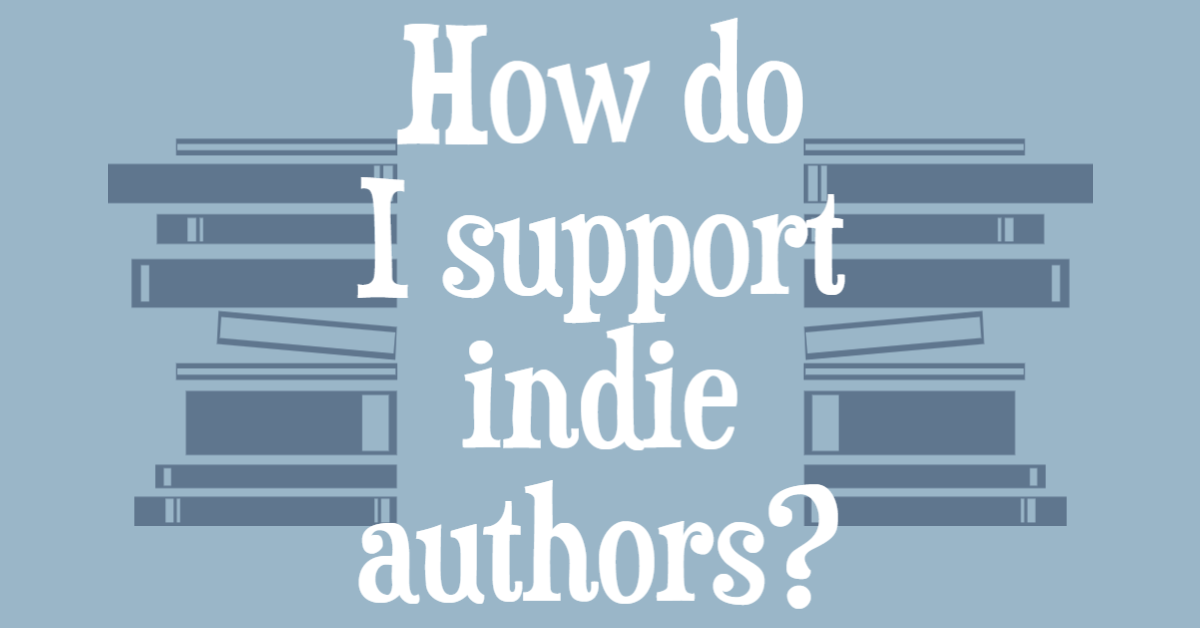
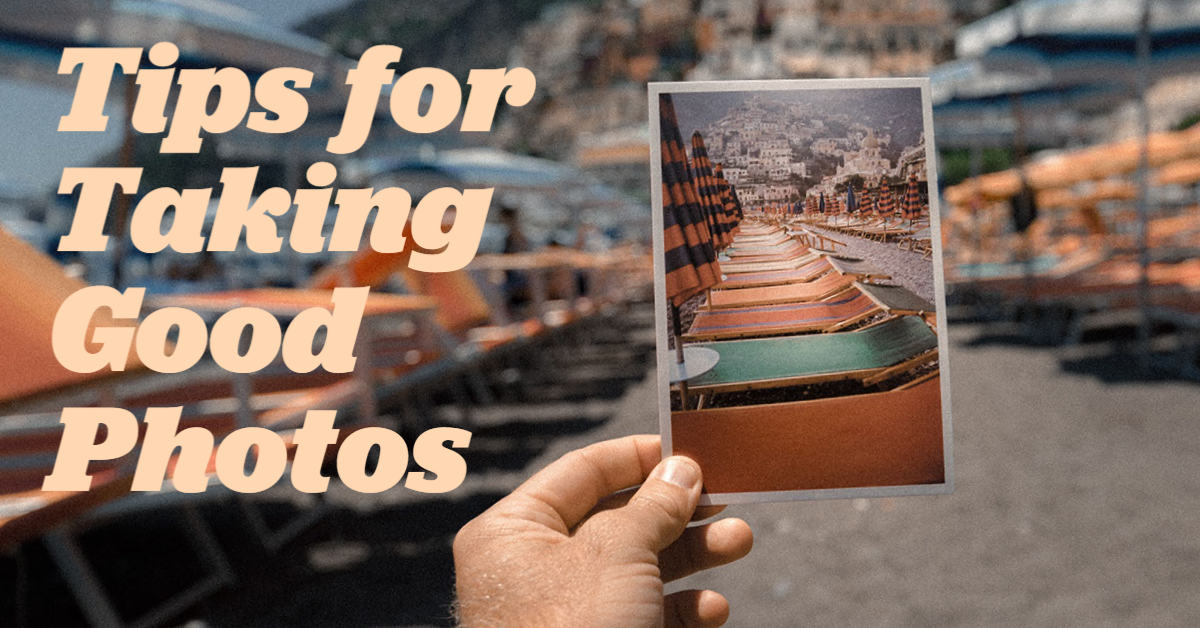
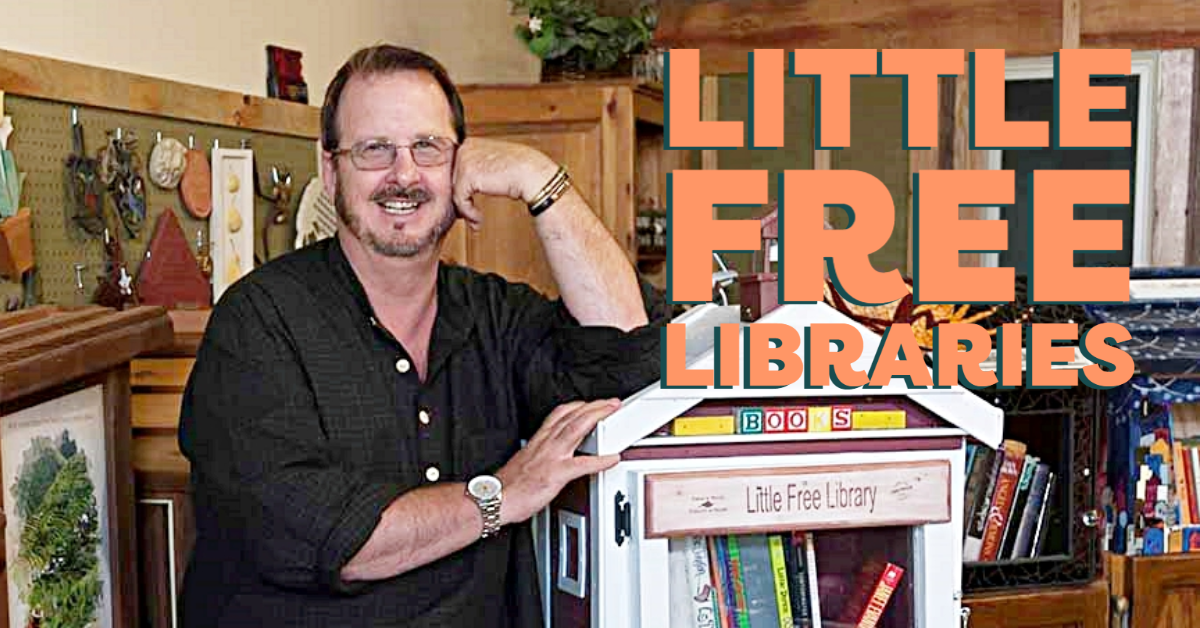
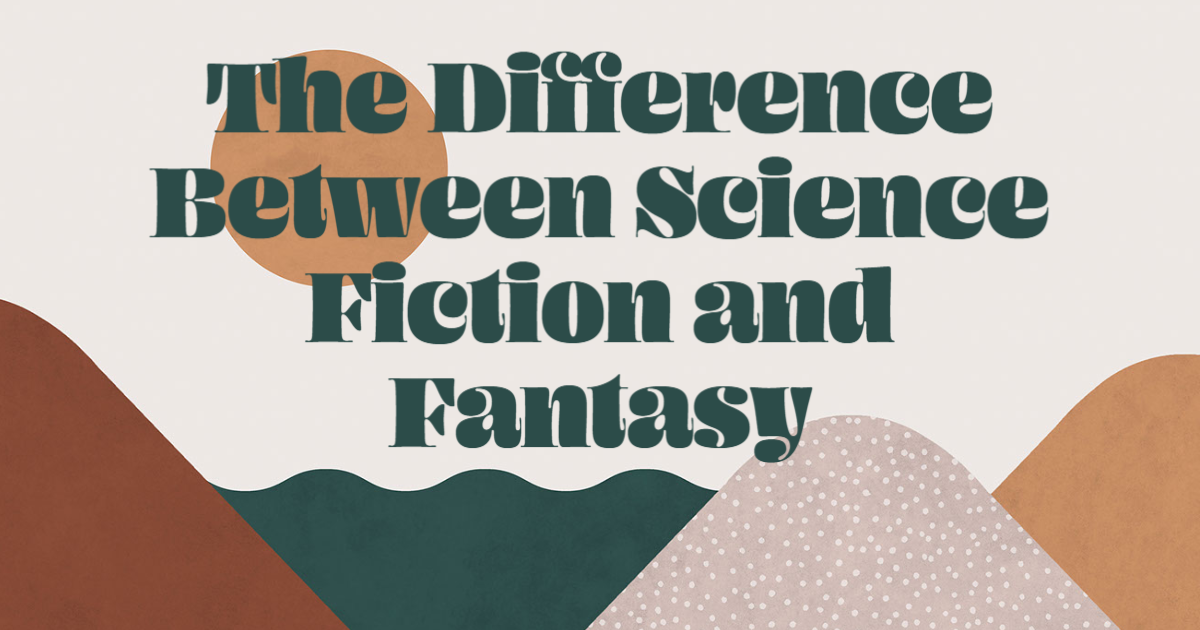
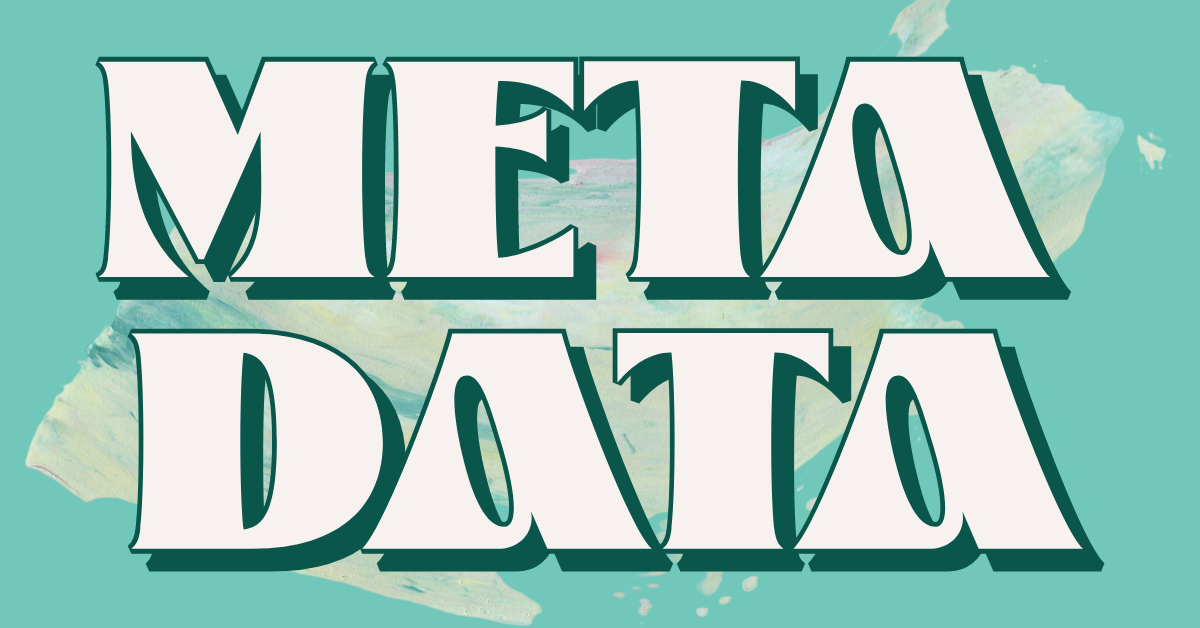
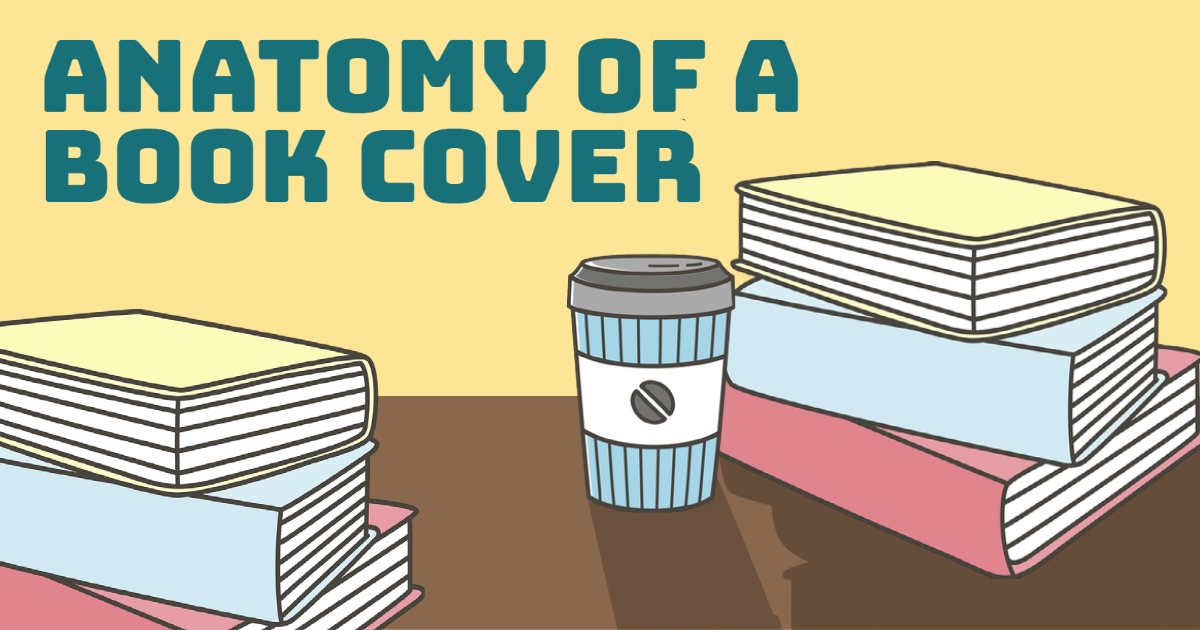
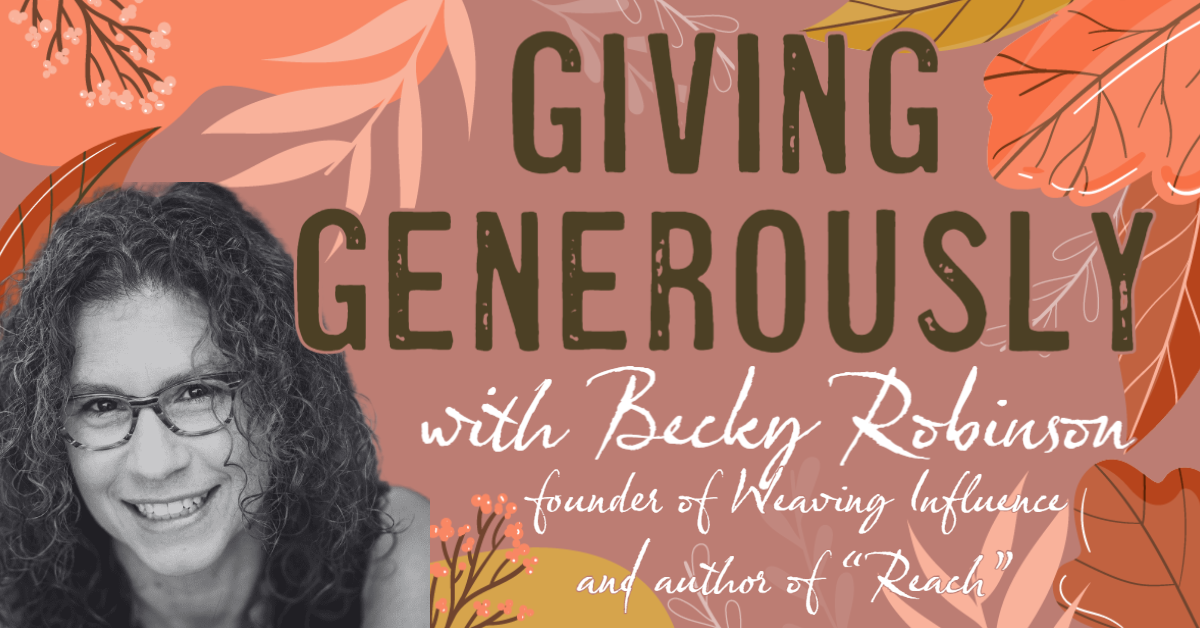
 RSS Feed
RSS Feed